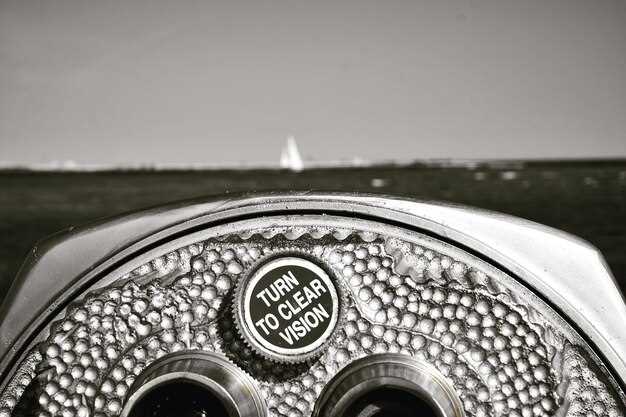The Fascinating History of the Fiat Brand

The Fiat brand, an iconic name in the automotive industry, boasts a rich heritage that spans over a century. Established in 1899 in Turin, Italy, Fiat has been synonymous with innovation, design, and engineering excellence. Its journey is marked by numerous milestones, reflecting the evolving needs of consumers and the broader trends within the automotive landscape. This evolution is not merely a tale of cars; it is a story of Italian culture and ingenuity.
Fiat’s heritage is deeply intertwined with the development of the automotive sector in Europe and beyond. Throughout its history, the brand has introduced a range of vehicles that not only catered to practical needs but also captured the spirit of the times. From the compact models that pioneered city driving to the sporty designs that ignited passion among car enthusiasts, Fiat has consistently adapted to changing market demands while staying true to its roots.
As we delve into the evolution of the Fiat brand, it is essential to recognize how it has maintained its relevance amid fierce competition and technological advancements. This article will explore the significant phases of Fiat’s journey, highlighting key innovations, partnerships, and the vision that continues to drive this legendary brand forward. In doing so, we celebrate the enduring legacy of Fiat and its profound impact on the global automotive industry.
Key Milestones in Fiat’s History: From Founding to Global Expansion
Fiat, an acronym for “Fabbrica Italiana Automobili Torino,” began its journey in 1899 when a group of investors, including Giovanni Agnelli, established the company in Turin, Italy. This marked the birth of one of the most influential car manufacturers worldwide, with the production of its first vehicle, the Fiat 3½ HP, shortly after its founding.
In 1908, Fiat made a significant move into the American market by establishing a subsidiary in Poughkeepsie, New York. This strategic expansion allowed Fiat to adapt its production techniques and cater to the growing demands of the American automotive landscape. By 1910, the company had become a leading manufacturer in Italy, producing various models that appealed to a diverse customer base.
The 1920s and 1930s witnessed a remarkable evolution as Fiat introduced the iconic Fiat 509 and Fiat 500 “Topolino,” which became emblematic of Italian automotive design and innovation. During this period, Fiat expanded its production facilities, resulting in increased output and enhanced technological advances.
World War II presented challenges, yet Fiat persevered by shifting to military vehicle production, adapting to the wartime economy. Post-war, Fiat played a crucial role in Italy’s recovery, launching the popular Fiat 600 and the widely acclaimed Fiat 500 in 1957. These models contributed significantly to the mobility of the Italian populace, solidifying Fiat’s status as a household name.
In the 1980s and 1990s, Fiat underwent significant restructuring to compete in the global market more effectively. Collaborations and partnerships, such as the one with General Motors in 2000, aimed to enhance technological exchange and market reach. However, financial challenges in the early 2000s prompted a strategic re-evaluation, leading to renewed focus on innovation and sustainability.
The acquisition of Chrysler in 2009 marked a pivotal moment for Fiat, allowing it to strengthen its presence in North America and diversify its offerings. This alliance transformed Fiat into a global player, enabling it to expand its portfolio with the introduction of new models and the revival of classic brands.
Today, Fiat continues to evolve, embracing electric mobility and sustainable practices while remaining true to its rich history. The journey from a small Italian factory to a global automotive powerhouse illustrates Fiat’s resilience and adaptability in an ever-changing industry.
Influential Models that Shaped Fiat’s Identity and Market Presence

Fiat’s heritage is intricately tied to a series of iconic models that have significantly shaped its identity and standing in the automotive market. These vehicles not only represent technological advancements but also encapsulate the brand’s evolution over the decades.
The Fiat 500, introduced in 1957, is perhaps the most emblematic model in the brand’s history. This compact car became a symbol of Italian automotive culture, embodying practicality and style. Its distinctive design and affordability made it popular among urban drivers, solidifying Fiat’s reputation for producing accessible and stylish vehicles.
Furthermore, the Fiat Panda, launched in 1980, revolutionized the concept of small cars by offering versatility and functionality. Its practical design appealed to families and city dwellers alike, reinforcing Fiat’s commitment to meeting diverse consumer needs. The Panda’s success showcased Fiat’s innovation in creating vehicles that were not only economical but also adaptable to various lifestyles.
The Fiat Uno, introduced in 1983, further cemented Fiat’s market presence. With its forward-thinking design and focus on fuel efficiency, the Uno captured the hearts of many European consumers. Its global success demonstrated Fiat’s ability to appeal to international markets, helping the brand expand its reach beyond Italy.
In more recent years, the revival of the Fiat 500 in 2007 redefined the brand’s modern identity. This modern iteration maintained the classic charm while integrating contemporary technology and safety features. Its success in various global markets emphasized Fiat’s ability to blend heritage with innovation, appealing to both nostalgic and new customers.
Each of these models has played a critical role in shaping Fiat’s identity and market presence, illustrating the brand’s ability to adapt while staying true to its roots. Through a rich legacy of influential designs, Fiat continues to be a major player in the automotive industry, reflecting both its history and its commitment to future innovations.
The Role of Innovation and Design in Fiat’s Brand Evolution

Fiat’s heritage is steeped in a commitment to innovation and design, which has significantly shaped its identity over the decades. From its inception in 1899, the brand recognized the importance of combining functionality with aesthetic appeal, setting a standard for automobile manufacturers worldwide. Innovative technologies have allowed Fiat to remain relevant in an ever-changing automotive landscape, addressing consumer needs and environmental concerns.
Throughout its history, Fiat has pioneered various engineering advancements, such as the introduction of the first mass-produced car, the Fiat 501, which showcased the brand’s dedication to accessibility and efficiency. This spirit of innovation continued with the Fiat 500 in the late 1950s, which combined compact design with exceptional fuel efficiency, encapsulating the post-war Italian lifestyle. The 500 not only became a cultural icon but also laid the groundwork for modern urban mobility solutions.
Design has also played a pivotal role in Fiat’s evolution. The brand has collaborated with renowned designers, such as Giugiaro and Pininfarina, to create vehicles that are both visually striking and practical. This synergy of aesthetics and engineering excellence has produced timeless models like the Fiat Panda and the Fiat Abarth, which balance sporty performance with everyday usability. These designs resonate with consumers, establishing an emotional connection that enhances brand loyalty.
In recent years, Fiat has embraced sustainable practices, reflecting modern consumer values and the global push for greener technologies. The introduction of electric and hybrid models demonstrates Fiat’s adaptability and commitment to innovation while honoring its legacy of design. By integrating cutting-edge technology with classic styling, Fiat continues to evolve, ensuring that its heritage remains relevant and inspiring for future generations.
Ultimately, the interplay of innovation and design has not only defined Fiat’s past but is also essential to its future. As the brand navigates the complexities of the modern automotive market, it will rely on its rich heritage to inform new creations, blending tradition with forward-thinking solutions to meet the demands of an ever-changing world.



